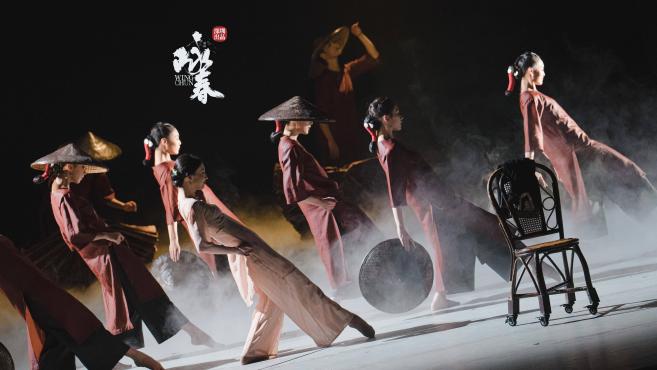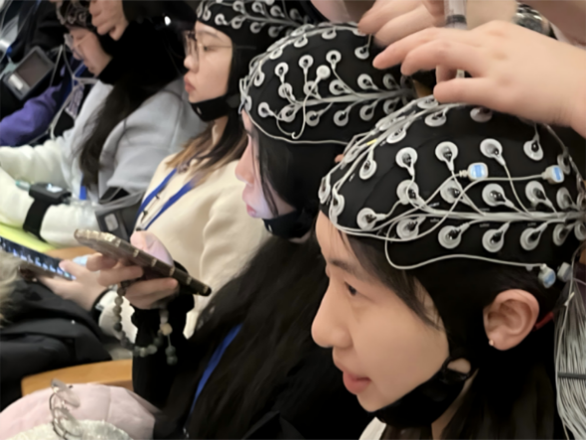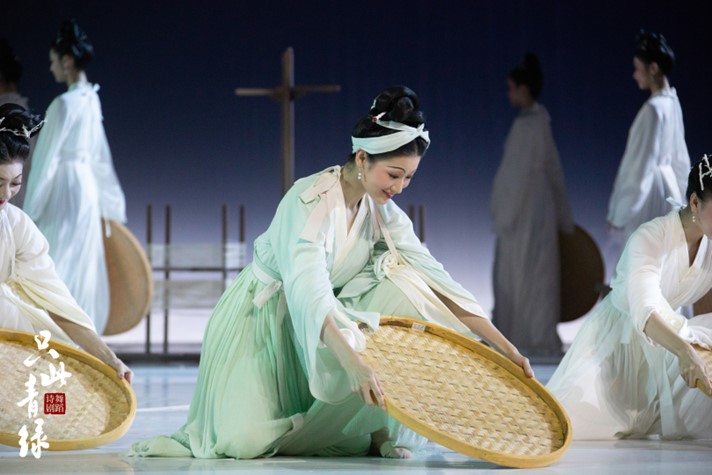China’s first real-theater neuroaesthetics experiment uses brain–computer interface technology to decode the emotional impact of live art
Why does a live performance move us in ways a video never can? A research team at Tsinghua University believes the answer may lie in the brain's dynamic response to real-time, multisensory immersion—and they now have the neural data to prove it.

Dance drama Wing Chun
In what is considered China’s first real-theater neuroaesthetics experiment, researchers from Tsinghua University’s Neural Engineering Laboratory deployed non-invasive brain–computer interface (BCI) technology to monitor the brain activity of audience members during a live dance drama performance. The study aims to explore how aesthetic experiences unfold in naturalistic settings—outside the confines of the laboratory.
Volunteers from a range of academic disciplines at Tsinghua University were fitted with portable electroencephalography (EEG) devices prior to the performance. The BCI systems, developed in-house by the lab, are fully non-invasive, safety-certified, and optimized for comfort. Each participant’s EEG signal was calibrated 40–50 minutes before curtain-up to ensure quality data acquisition.

Volunteers wear portable EEG devices to record real-time brain activity during the performance
“Neuroaesthetics has long relied on simplified, static stimuli in controlled environments. But artistic experience in the real world is fundamentally immersive and multisensory,” says Gao Xiaorong, professor of neural engineering and principal investigator of the study. “By turning the theater into a living laboratory, we are capturing the brain in its most engaged and ecologically valid state.”
The team reports that immersive theatrical elements—lighting, sound, choreography, and stage design—activate broad, distributed regions of the brain associated with emotional processing, sensory integration, and attentional engagement. “We observed that full-brain synchronization and neural excitation increased significantly during moments of heightened dramatic intensity,” says doctoral researcher Li Zexuan. “This supports the long-held intuition that live performances evoke deeper emotional resonance than mediated content.”
“This isn’t something out of a sci-fi movie,” said one team member.
Established in 2004, the Neural Engineering Lab at Tsinghua’s School of Biomedical Engineering has been a national leader in brain–machine interface development. Its foray into neuroaesthetics builds on decades of research in signal processing and neural decoding. But the team’s vision goes beyond technical advancement.

Scene from the dance drama Five Stars Rising in the East (Wu Xing Chu Dong Fang)
“Aesthetic experience is both universal and personal. Neuroaesthetics invites us to examine not only what we find beautiful, but how and why we respond,” Li says. “We are also exploring how Eastern aesthetics can enrich global cognitive neuroscience.”

Scene from the dance drama Only Blue and Green (Zhi Ci Qing Lü)
Long-term, the team hopes to apply these insights to fields ranging from emotional rehabilitation and cognitive aging to arts-based education. In parallel, they are working with clinical partners to apply BCI-based decoding to assist in the diagnosis of depression and other mood disorders—a convergence of art, science, and medicine.
“We are not just measuring brainwaves,” Gao adds. “We're seeking a deeper understanding of how the brain connects with the world—through emotion, through culture, and through beauty.”